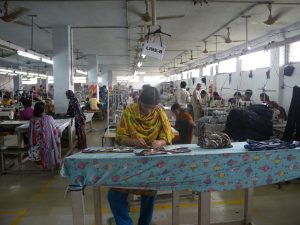Bangladesh and Indonesia expect to sign a bilateral preferential trade agreement (PTA) shortly. On January 28, 2018, the two countries formed a trade negotiation committee (TNC), which has since held three meetings, with the fourth scheduled to take place next month in Indonesia. A final discussion, which is expected to conclude the PTA negotiations, may take place at the next meeting.
A PTA is a modest type of free trade agreement, involving a limited reduction or elimination of tariffs on specific goods between two or more countries. Still, PTA negotiations often involve a complicated balancing act between protecting domestic industries and encouraging trade. This has been the case during the PTA talks between Indonesia and Bangladesh, which began with the first meeting of the TNC in December 2018.
At the second meeting in July 2019, Indonesia submitted to Bangladesh a request list of 309 products on which it wished to see tariff reductions. Bangladesh also submitted a request list of 301 products to Indonesia, including readymade garments (clothing and accessories), leather and leather goods, pharmaceuticals, jute and jute goods, and electronics.
Indonesia then proposed that the agreement be signed at the 37th Trade Expo Indonesia on October 19-23, 2022. However, Dhaka requested a revised list of goods on which Jakarta can offer tariff concessions for Bangladeshi goods, including garments, which Indonesia had excluded from its initial list of goods slated for tariff reductions. It was a reasonable request considering that after China, Bangladesh is the world’s second-largest garment exporter, with total exports valued at $35.8 billion in 2021.
However, lowering tariffs on Bangladeshi garments presents a dilemma for the Indonesian government. Jakarta is committed to promoting free trade through PTA, but it is also keen to protect some domestic industries, such as garment manufacturing, from low-cost import competition due to their importance to the economy.
Bangladeshi garments have proven highly competitive in the Indonesian market. Indonesia’s imports of garments from Bangladesh have risen 194 percent from $25.6 million in 2013 to $75.2 million in 2022, accounting for 68 percent of total garment imports. This increase despite the presence of relatively high tariffs of 20-25 percent.
Indeed, Indonesia has suffered a growing trade deficit in garments with Bangladesh, which expanded from $24.7 million in 2013 to $75.6 million in 2022. Yet, over the same period, Indonesia enjoyed a trade surplus on textiles (cotton, yarn, fabric) with Bangladesh, which rose from $93.18 million to $335.46 million.
Lowering tariffs on Bangladeshi garments might boost imports further, fulfilling the PTA’s goal of boosting trade. Conversely, it could also result in trade diversion, which occurs when the lower tariff causes a shift in demand away from domestic garment producers and other countries of origin. Low-cost imports can cause price decreases, making it difficult for domestic producers to maintain profit margins and, in the worst-case scenario, may force them out of business.
Granting lower tariffs to Bangladesh might also be perceived as contradicting Indonesia’s efforts to reduce garment imports through safeguard duties since November 2021. The World Trade Organization (WTO) defines safeguard duties as “emergency actions to protect a domestic industry from an increase in imports of any product which is causing, or which is likely to cause, serious injury to the industry.” These are additional duties, which are temporarily levied on top of the normal tariff, to support a domestic industry while it adjusts to increased competition.
Based on the Harmonized System (HS), a product classification system to identify traded goods, Indonesia’s safeguard duties exist on 134 garment items (under HS 61 and 62). For the first year, the duties range between IDR 19,260 and IDR 63,000 per piece, gradually decreasing in the second and third years. The duties are levied on imports from all countries, except for eight items of headwear and neckwear imported from 122 developing countries, including Bangladesh.
The right timing to reduce tariffs on Bangladeshi garments would be after the safeguard duties expire in 2024. Yet, under WTO rules, an extension beyond the three-year period is possible based on an assessment of the industry’s performance.
Another option is to permit a tolerable level of tariff reduction on Bangladeshi garments under the PTA while continuing to impose safeguard duties until their expiry. Further tariff reductions can then be renegotiated in a review of the PTA within an agreed time frame after its implementation.
This option would best reflect Indonesia’s commitment to creating a mutually beneficial PTA with Bangladesh. Lowering tariffs on garments could be a win for Bangladesh, in exchange for Indonesia’s win in terms of the larger trade surplus on textiles that would likely result.
Signing the PTA would allow other Indonesian products, such as palm oil, fish, spices, wood and wood products, electronics, and train cars, to gain greater access to the Bangladeshi market. At the same time, the government must convince domestic stakeholders that the PTA is not intended to sacrifice one sector for the benefit of others.
Despite the garment dilemma, Indonesia and Bangladesh should keep looking for ways to reach a compromise and conclude the PTA in short order.

































